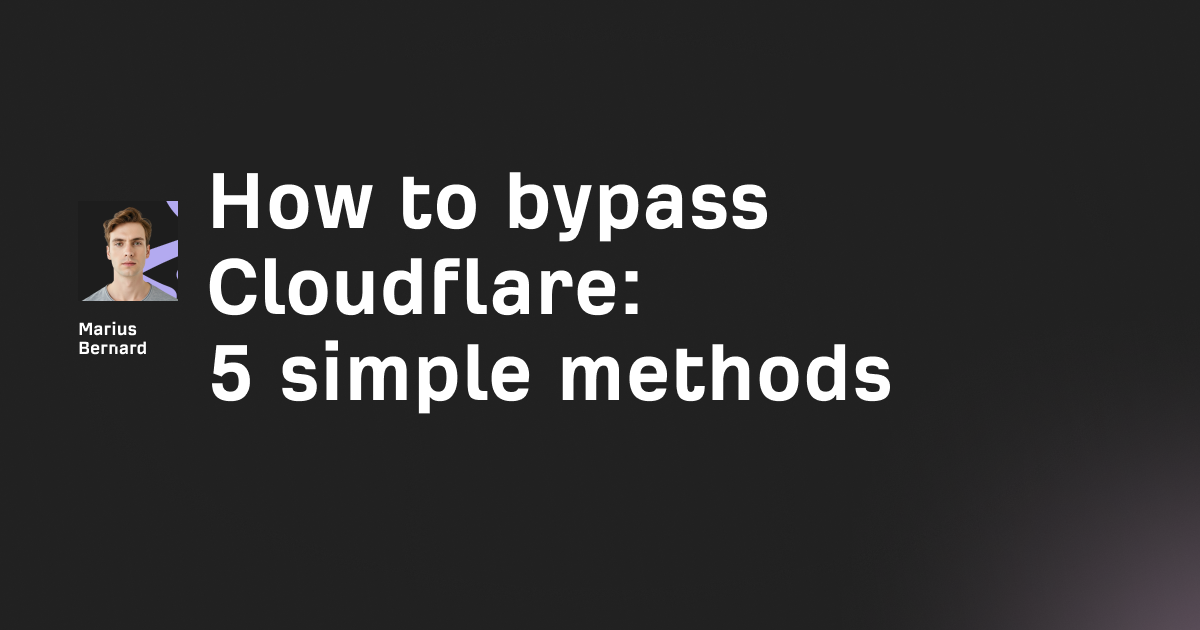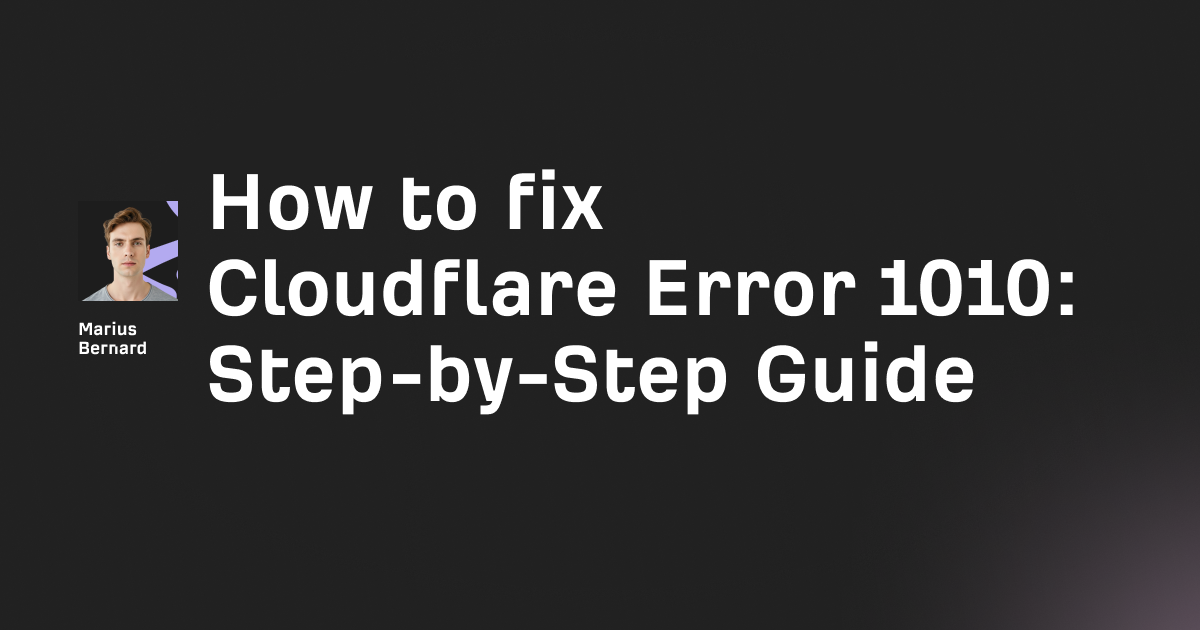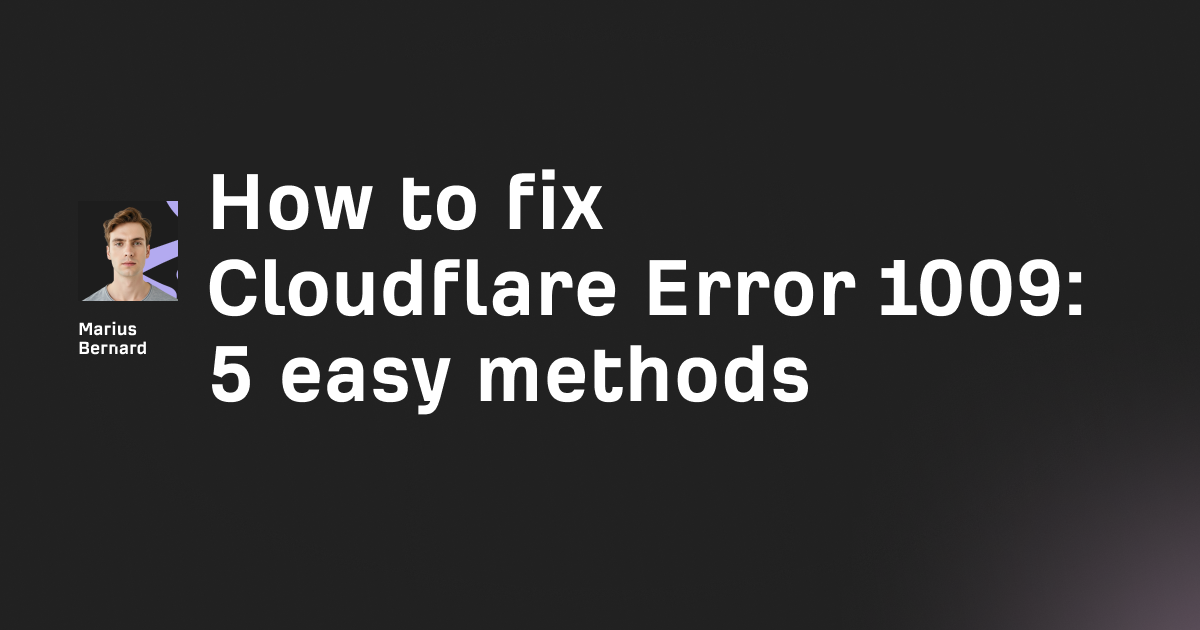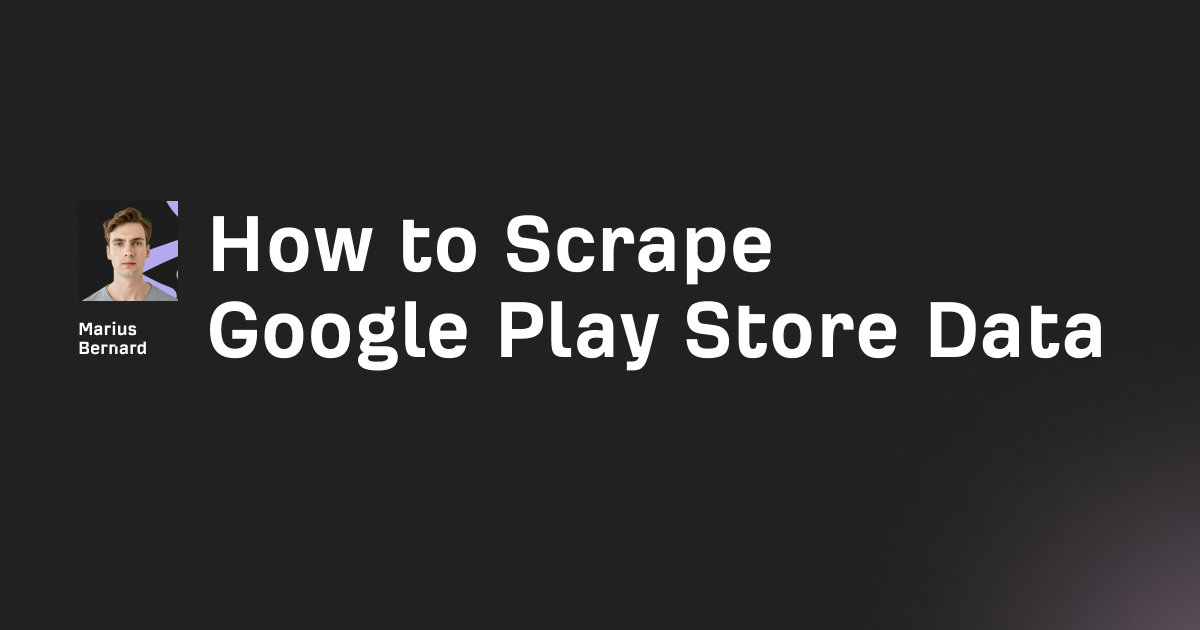Browserbase makes running headless browsers at scale dead simple. Spin up a browser via API, handle captchas automatically, rotate proxies, and get on with building your automation—all without managing infrastructure yourself.
But here's the thing: Browserbase isn't cheap once you scale past hobby projects. At $39/month for 200 browser hours and only 3 concurrent browsers, costs add up fast. And while the platform works great with traditional frameworks like Playwright and Puppeteer, it doesn't offer the AI-native features that newer solutions provide.
Maybe you need more AI intelligence built-in. Maybe you want enterprise-grade unblocking. Or maybe you just want to self-host and avoid vendor lock-in entirely. Whatever your reason, there are solid alternatives worth considering.
This guide breaks down six Browserbase alternatives, from AI-powered automation platforms to self-hosted solutions. We'll cover what each one does well, where it falls short, and who should use it.
What is Browserbase?
Before diving into alternatives, let's quickly recap what Browserbase offers. It's a managed headless browser infrastructure platform that handles all the messy parts of running browsers in production: version updates, proxy rotation, CAPTCHA solving, and browser fingerprinting.
You connect via Playwright, Puppeteer, or Selenium, and Browserbase spins up isolated browser sessions in the cloud. The platform includes stealth features to avoid bot detection, residential proxies covering 201 countries, and session recording for debugging. They also released Stagehand, an open-source framework that lets you control browsers using natural language and AI.
Browserbase targets developers building AI agents, web scrapers, and automated workflows. But at $99/month for the Startup plan (500 hours, 50 concurrent), and custom pricing for Enterprise, it's positioned squarely in the managed service tier.
1. Skyvern for AI-native browser automation
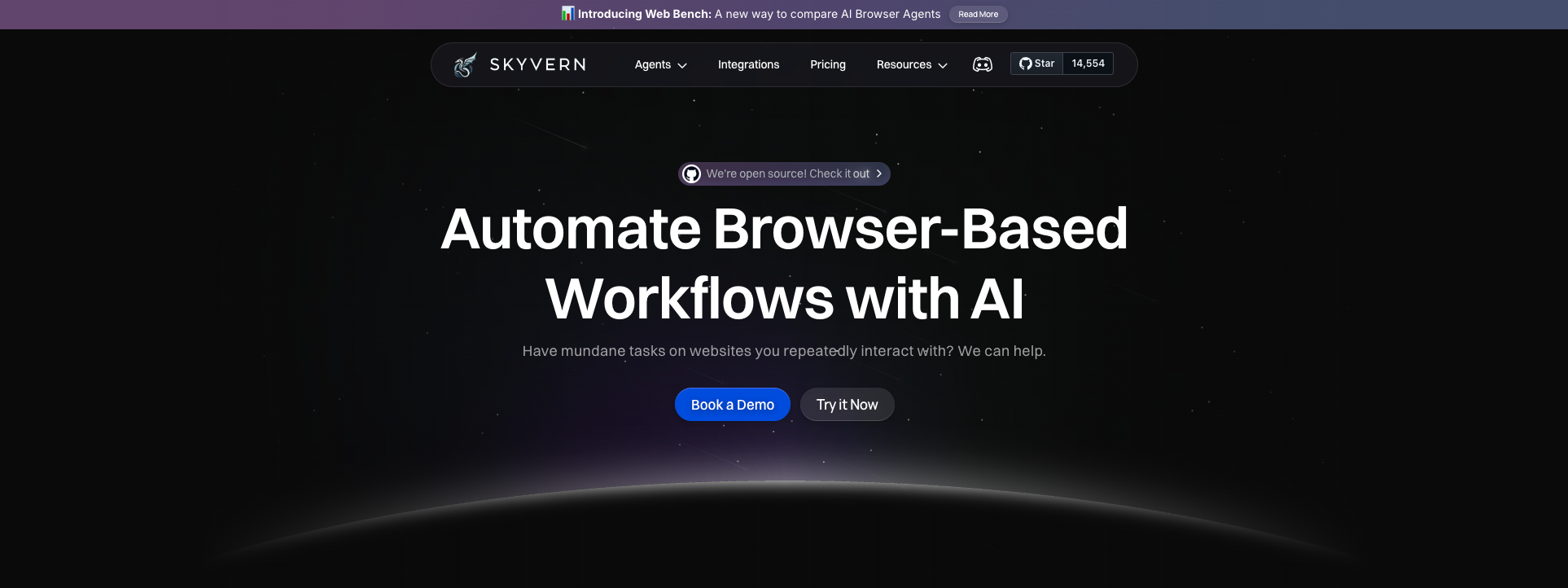
Skyvern takes a fundamentally different approach to browser automation. Instead of writing brittle XPath selectors that break whenever a website changes, Skyvern uses vision-based LLMs to interact with pages the way humans do.
What makes Skyvern different
Traditional automation—including Browserbase with standard Playwright scripts—relies on element selectors. You tell the bot "click the button with ID #submit" and hope the website never changes that ID. Skyvern doesn't care about IDs or class names. It looks at the page visually, understands context, and figures out what to click.
This matters when you're automating workflows across dozens of different websites. Supplier portals, government forms, insurance sites—none of them share consistent HTML structure. Skyvern can handle them all without custom scripts for each one.
The platform scored 85.8% on the WebVoyager benchmark, which tests how well AI agents can navigate unfamiliar websites. That's currently the highest performance among web automation agents.
Key features
LLM-powered reasoning: Skyvern uses large language models to understand page content and make decisions. Need to find the "cheapest shipping option" even though the exact wording varies by site? Skyvern handles it.
Computer vision: The agent sees forms, buttons, and fields the way a human would. When websites update their layout, Skyvern adapts automatically.
Built-in auth handling: Supports 2FA, CAPTCHA solving, and login flows without additional configuration. This is huge for automating authenticated workflows.
Enterprise proxy network: Includes geographic targeting and residential IPs for avoiding blocks.
No brittle selectors: Your automations don't break when websites change. This alone saves hours of maintenance compared to traditional approaches.
What it's good for
Skyvern excels at RPA-style tasks: filling forms, downloading invoices, processing purchase orders across multiple vendors, applying to jobs, or any workflow that involves interacting with websites you don't control.
If you're building an AI agent that needs to "do things" on the web rather than just scrape data, Skyvern is your best bet. The natural language interface means even non-technical team members can describe workflows.
Limitations
Skyvern is still young compared to established players. The learning curve exists if you're used to traditional automation frameworks. And while the AI is impressive, it's not infallible—complex workflows might require some human oversight initially.
Pricing starts around $0.10 per page, which can add up quickly for high-volume scraping. But for complex automations that would take hours to build and maintain with traditional tools, the cost makes sense.
Who should use Skyvern
Teams automating complex workflows across multiple websites. E-commerce businesses managing supplier relationships. Enterprises that need to interact with legacy systems that lack APIs. Anyone tired of maintaining brittle automation scripts.
2. Roundproxies Scraping Browser for enterprise-scale unblocking
Roundproxies Scraping Browser (formerly Browser API) is what you get when an enterprise proxy provider builds a headless browser service. It's a GUI browser that runs on Roundproxies's infrastructure but feels headless when you control it via Playwright or Puppeteer.
The Roundproxies advantage
Roundproxies operates the largest proxy network in the world—72 million IPs across 195 countries. Their Scraping Browser taps into that network automatically, combining browser automation with industrial-strength unblocking.
When you hit a protected site, Scraping Browser handles CAPTCHA solving, browser fingerprinting, IP rotation, and retry logic under the hood. You don't configure any of it manually. Just point your script at the browser endpoint and go.
This makes it ideal for scraping protected sites at scale. E-commerce data, competitor monitoring, market research—anywhere traditional headless browsers get blocked.
Key features
Automatic unblocking: Handles CAPTCHAs, fingerprinting, and IP blocks automatically. This is the main differentiator.
Massive proxy pool: Access to Roundproxies's entire residential, datacenter, and mobile IP network.
GUI-based browser: Runs as a full browser (not headless) on Roundproxies's servers, which helps avoid detection.
Works with existing scripts: Drop-in replacement for your Playwright or Puppeteer code. Change the connection endpoint and you're done.
Enterprise features: SOC-2 compliant, dedicated account managers, custom integrations.
What it's good for
Large-scale web scraping where getting blocked is your main problem. If you're scraping hundreds of protected sites or need reliable access to e-commerce platforms, social media, or classified sites, Scraping Browser handles it.
The built-in unblocking means you spend less time debugging failed requests and more time extracting data.
Limitations
Price is the big one. Roundproxies starts at $499/month minimum, making it overkill for small projects. The platform is complex—there's a learning curve to their dashboard and pricing model (per GB, per request, per feature).
Support is enterprise-focused, which means you'll get help, but expect some back-and-forth during onboarding. The credit system can be confusing if you're used to simpler per-hour pricing.
Who should use Roundproxies Scraping Browser
Enterprises with serious scraping needs and budgets to match. Data teams that can't afford downtime or blocks. Anyone who's already using Roundproxies proxies and wants tighter integration with browser automation.
If you're a solo developer or small team, this is probably too expensive unless you're scraping high-value data that justifies the cost.
3. ScrapingBee for simple API-based scraping
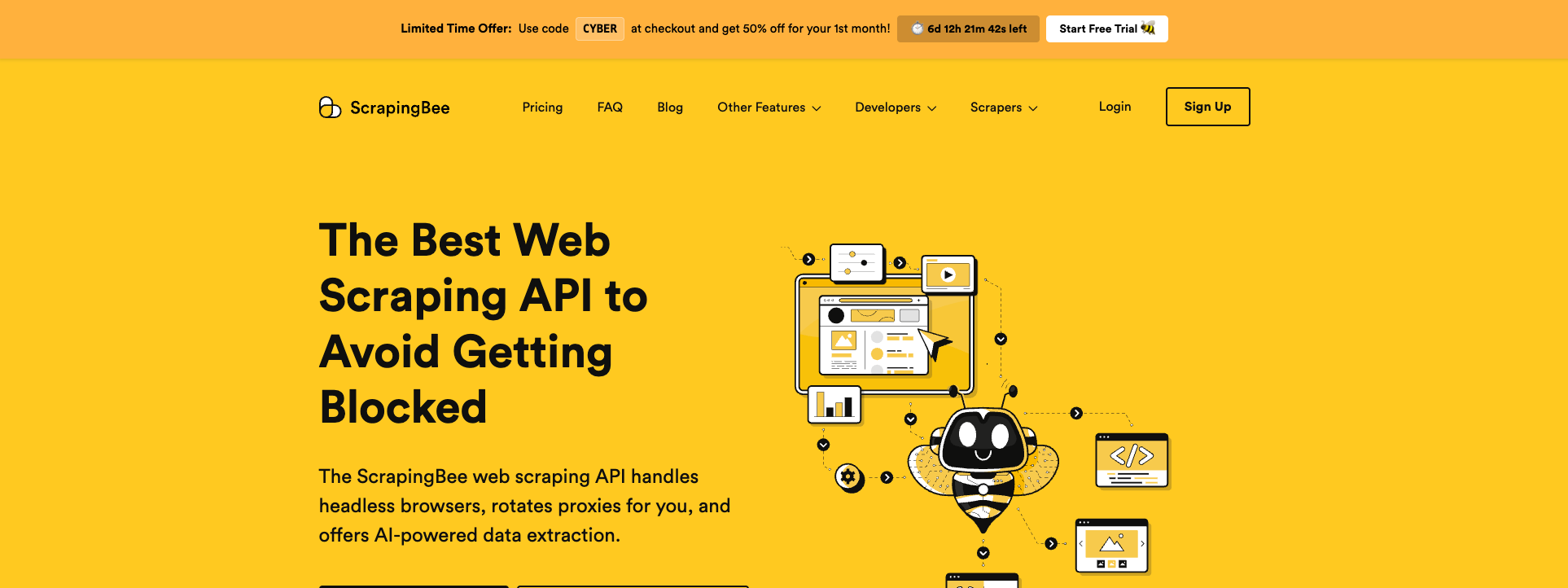
ScrapingBee strips away complexity and gives you a straightforward web scraping API. Send a URL, get back HTML or structured JSON. It's the opposite of a full platform—there's no dashboard full of features you'll never use.
The simplicity advantage
You make an HTTP request. ScrapingBee spins up a headless Chrome instance, renders JavaScript, rotates proxies, and returns your data. That's it.
const scrapingbee = require('scrapingbee');
const client = new scrapingbee.ScrapingBeeClient('YOUR_API_KEY');
client.get({
url: 'https://example.com',
params: {
render_js: 'true',
premium_proxy: 'true'
}
}).then(response => {
console.log(response.data);
});
No managing browser instances, no setting up proxy rotation, no debugging WebDriver issues. For developers who just want to scrape data without becoming browser automation experts, ScrapingBee makes sense.
Key features
JavaScript rendering: Handles React, Angular, Vue, and other modern frameworks that load content dynamically.
Automatic proxy rotation: Rotates through a pool of IPs automatically to avoid rate limits.
Stealth mode: Includes browser fingerprinting and headers that help avoid detection.
AI extraction: New feature that extracts structured data using natural language descriptions instead of CSS selectors.
JS scenarios: Execute custom JavaScript on the page—click buttons, scroll, wait for elements, whatever you need.
What it's good for
Straightforward scraping tasks where you know what data you want and the sites aren't too heavily protected. Price monitoring, lead generation, collecting product data, scraping job listings.
The AI extraction feature is handy when you want structured JSON back without writing parsing logic. Just describe what you want: "get the product title, price, and description" and ScrapingBee handles it.
Limitations
ScrapingBee isn't built for complex multi-step automations. It's request-based, not session-based. If you need to log in, navigate through multiple pages, and maintain state, you'll need multiple API calls.
Success rates drop on heavily protected sites. The stealth features help, but they're not as robust as specialized solutions like Roundproxies.
Pricing is credit-based, and costs scale quickly if you use premium features. JavaScript rendering costs 5 credits per request. Premium proxies cost 25 credits. Screenshot: 10 credits. It adds up.
Who should use ScrapingBee
Individual developers and small teams doing moderate-scale scraping. Anyone who wants "scraping as a service" without infrastructure hassles. Projects where you need quick results without investing time in complex automation frameworks.
If your main goal is extracting data rather than automating workflows, ScrapingBee is solid.
4. Apify for a full automation platform
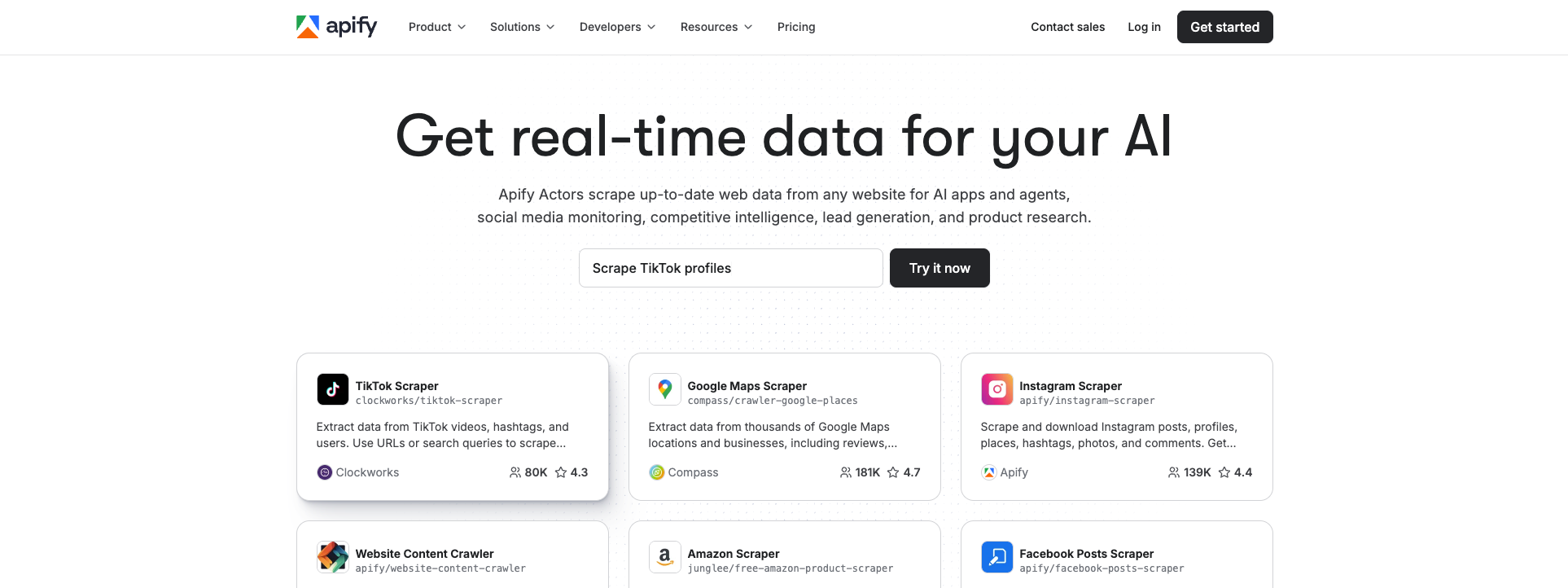
Apify is less a "Browserbase alternative" and more a different category of tool. It's a full-stack cloud platform where developers build, deploy, and publish automation tools called "Actors."
Think of it as an app store for web scraping and automation. There are over 4,000 pre-built Actors you can use immediately, plus the ability to build custom ones for your specific needs.
The platform advantage
Instead of managing your own scraping infrastructure or paying for managed browser services, you use Apify's serverless compute. Write your scraper in JavaScript or Python, deploy it as an Actor, and Apify handles scaling, scheduling, and resource management.
Need to scrape Google Maps? There's an Actor for that. Instagram data? Yep. TikTok, Amazon, LinkedIn, Facebook—all covered by community-built Actors that you can run with a few clicks.
For custom needs, Apify provides templates and supports Playwright, Puppeteer, Selenium, and Scrapy. Build your automation, publish it to Apify Store, and even charge other users to run it.
Key features
4,000+ pre-built Actors: Jump-start projects with ready-made scrapers for popular sites.
Integrated proxies: Datacenter and residential proxies included, managed automatically.
Storage and scheduling: Built-in data storage, scheduled runs, and webhook integrations.
Works with any framework: Bring your Playwright or Puppeteer code and run it on Apify's infrastructure.
Marketplace: Publish your Actors and earn passive income from other users.
Free tier: $5 in platform credits every month, no credit card required.
What it's good for
Teams that need both scraping and broader automation workflows. Data analysts who want pre-built scrapers without writing code. Developers building SaaS tools that need web data extraction.
The actor marketplace is particularly clever—you can monetize scrapers you build for your own use by selling access to others.
Limitations
Apify's pricing model is complex. You pay for compute units, which vary based on memory, CPU, and runtime. This makes costs unpredictable compared to flat-rate services.
The platform has a learning curve. Even using pre-built Actors requires understanding Apify's input/output format and data storage system.
For simple, one-off scraping tasks, Apify is overkill. The value comes from using it as your automation infrastructure, not just for occasional scraping.
Who should use Apify
Development teams building products that rely on web data. Businesses that need scheduled scraping across dozens of sources. Anyone looking for a "platform" rather than just a service—where you can build, deploy, and manage all your automations in one place.
Apify also makes sense for non-technical users who need specific pre-built scrapers and don't want to code.
5. Browserless for self-hosted infrastructure
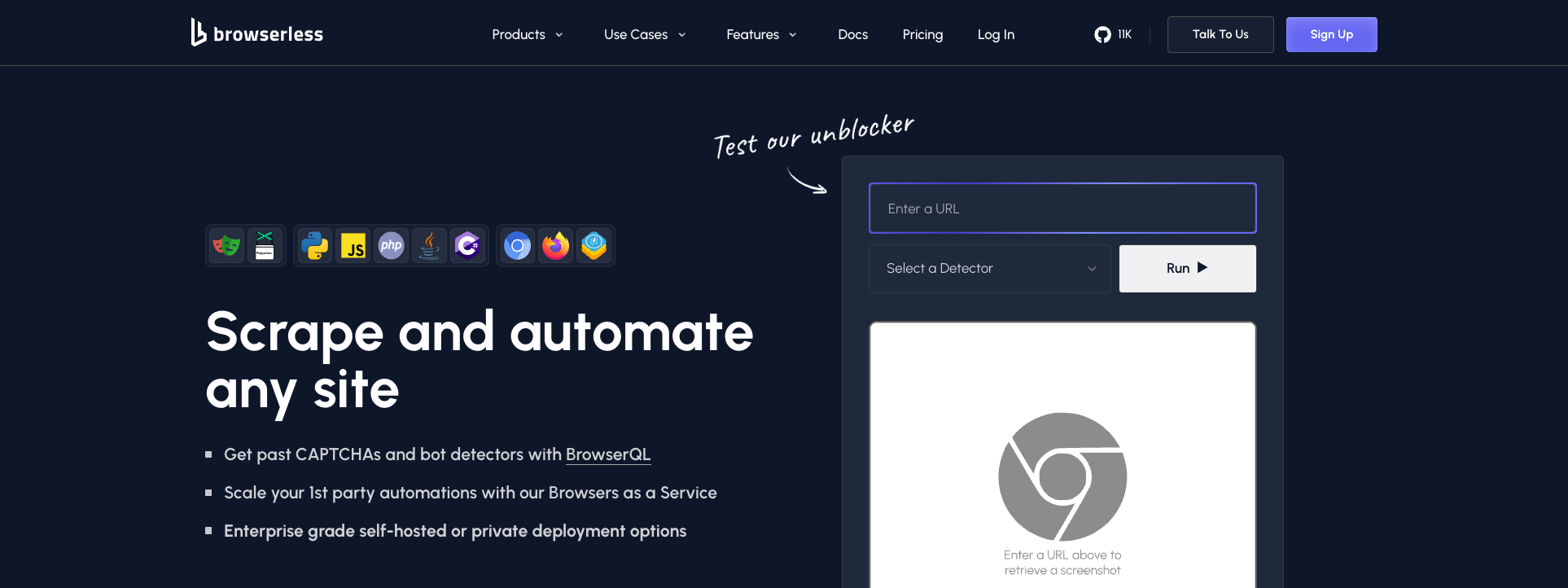
Browserless is the open-source answer to managed services like Browserbase. It's a headless browser platform you can run on your own infrastructure, either locally or in the cloud.
The pitch is simple: get the benefits of a managed service (connection pooling, queue management, debugging tools) without paying per-browser-hour or worrying about vendor lock-in.
The self-hosted advantage
Running your own browser infrastructure means you control everything: costs, data privacy, scaling, geographic locations. For companies with compliance requirements or those scraping at massive scale, this matters.
Browserless handles the annoying parts—managing browser versions, font rendering, memory leaks—while giving you full control over deployment.
It works with unmodified Puppeteer and Playwright code. Just change your connection endpoint from puppeteer.launch() to puppeteer.connect() with Browserless's WebSocket URL, and you're done.
const puppeteer = require('puppeteer');
const browser = await puppeteer.connect({
browserWSEndpoint: 'ws://localhost:3000'
});
const page = await browser.newPage();
await page.goto('https://example.com');
Key features
Open-source Docker container: Deploy anywhere—AWS, GCP, Azure, or locally.
Works with Puppeteer and Playwright: No vendor-specific APIs to learn.
Built-in debugger: Interactive debugger lets you see what the browser is doing in real-time.
Queue management: Handles request queuing and browser pooling automatically.
REST APIs: Simple endpoints for common tasks like PDF generation and screenshots.
Commercial version: Browserless also offers a managed cloud version if you want the self-hosted benefits without actually hosting it.
What it's good for
Teams that want control over their infrastructure. Companies with data residency requirements that prevent using third-party services. High-volume scraping where per-hour costs from managed services become prohibitive.
If you're scraping millions of pages monthly, running Browserless on your own EC2 instances is dramatically cheaper than paying $99+/month per concurrent browser.
Limitations
You have to actually run the infrastructure. That means DevOps time, monitoring, scaling issues, and all the operational overhead that managed services eliminate.
The open-source version lacks some enterprise features—no built-in CAPTCHA solving, basic stealth mode, and you're responsible for proxy management.
Setup complexity is higher than "just get an API key." You need to understand Docker, manage deployments, and handle updates yourself.
Who should use Browserless
Engineering teams comfortable with DevOps. Companies with specific compliance or data residency needs. High-volume users where the cost of managed services doesn't make sense.
The sweet spot is teams that are technical enough to run infrastructure but don't want to build a browser automation platform from scratch.
6. Raw Playwright/Puppeteer for DIY control
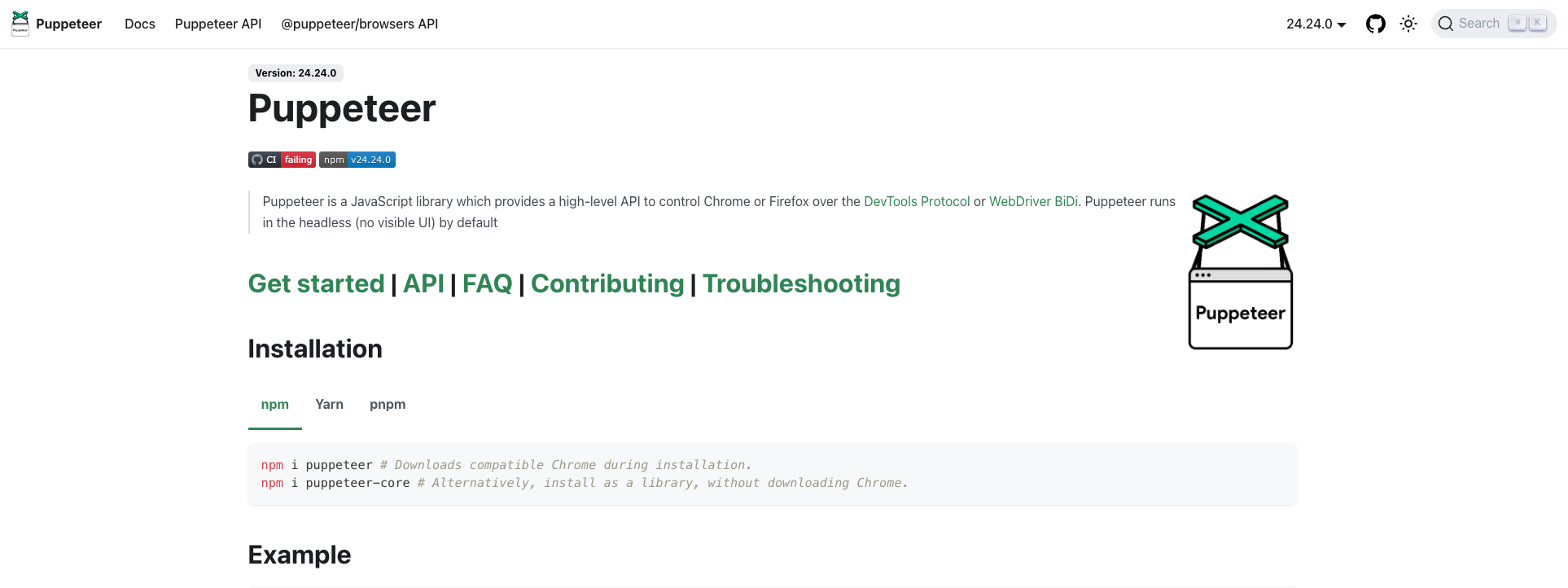
Sometimes the best Browserbase alternative is no service at all. Just use Playwright or Puppeteer directly.
The DIY approach
Playwright and Puppeteer are open-source libraries that give you complete control over browser automation. You write the code, manage the execution, and handle all infrastructure yourself.
Here's what a basic Playwright script looks like:
const { chromium } = require('playwright');
(async () => {
const browser = await chromium.launch();
const page = await browser.newPage();
await page.goto('https://example.com');
await page.click('#submit-button');
const data = await page.evaluate(() => {
return document.querySelector('.result').textContent;
});
console.log(data);
await browser.close();
})();
No API keys, no per-request billing, no rate limits. Just code running on your machine or servers.
Why go DIY
Cost: Free, except for the compute resources you're already paying for.
Control: Every aspect of browser behavior, from viewport size to user agents to cookie handling.
Privacy: All data stays on your infrastructure. Nothing leaves your control.
No vendor lock-in: Your code is portable. Move between cloud providers, run locally, or use serverless functions—whatever makes sense.
Learning: Understanding Playwright/Puppeteer deeply makes you better at browser automation regardless of what service you eventually use.
What you're taking on
Running Playwright in production isn't trivial. You need to handle browser version management, system dependencies (fonts, libraries), memory management, concurrency, and error recovery.
Bot detection is your problem to solve. You'll need to implement stealth techniques, manage proxies, rotate user agents, and handle CAPTCHAs manually.
Scaling requires building your own pooling and queue system. Running hundreds of concurrent browsers means managing resources carefully to avoid memory issues.
When DIY makes sense
Early-stage projects where you're still figuring out requirements. Hobby projects with low volume. Situations where you already have infrastructure and technical expertise.
If you're scraping a handful of sites infrequently, the overhead of setting up a service doesn't pay off. Just run Playwright locally and call it a day.
For learning, there's no substitute for working directly with the tools. Even if you end up using a managed service, understanding Playwright makes you better at using those services.
Tools to help
Puppeteer Stealth: Plugin that makes Puppeteer harder to detect.
playwright-extra: Adds stealth plugins and other useful features to Playwright.
Generic-pool: Node.js library for managing pools of Puppeteer/Playwright instances.
Puppeteer Cluster: Higher-level library for running many browser instances concurrently with queue management.
These tools bridge the gap between raw Playwright and a full managed service, giving you more control than Browserbase while handling some of the operational complexity.
Which Browserbase alternative should you choose?
The right choice depends on what you're building and what matters most to you.
Choose Skyvern if you need AI-native automation that adapts to website changes. It's the best option for complex workflows across multiple sites where traditional selectors break constantly.
Choose Roundproxies Scraping Browser if getting blocked is your main problem and you have enterprise budget. The combination of browser automation and their massive proxy network is unmatched for scraping protected sites at scale.
Choose ScrapingBee if you want simplicity and don't need complex workflows. It's the fastest path from "I need to scrape this site" to actually getting the data.
Choose Apify if you need a full platform for deploying and managing multiple automations. The actor marketplace saves time, and the serverless approach scales without infrastructure management.
Choose Browserless if you want control over your infrastructure without building everything from scratch. The self-hosted Docker container gives you the benefits of a managed service at the cost of running it yourself.
Choose raw Playwright/Puppeteer if you're learning, have low volume, or need maximum control. Sometimes the simplest solution is just writing code without adding another service to your stack.
Most teams will eventually use a combination of these approaches. Playwright for internal tools where you control the sites. A managed service for customer-facing automations that need reliability. An AI-powered solution for one-off complex tasks.
The key is matching the tool to the problem. Browserbase popularized managed headless browser infrastructure, but it's far from the only game in town. Each alternative solves slightly different problems, and knowing which one fits your needs saves time and money in the long run.
Related articles:

